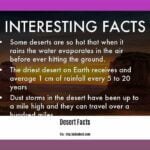Exploring the Feasibility and Essence of Driving Through Death Valley: Can You Drive through Death Valley?
Venturing into the vast expanse of Death Valley, the idea of embarking on a road trip may initially appear daunting. Yet, as seasoned travel enthusiasts are well aware, this iconic national park is not only drivable but also presents a truly awe-inspiring experience. In this article, we will delve into the feasibility and essence of driving through Death Valley, uncovering the wonders and potential challenges that await those brave enough to embark on this unforgettable expedition. From its unique blend of geological marvels to the breathtaking scenery that unfolds along its winding routes, we will equip you with essential knowledge and resources to ensure a safe and mesmerizing journey through this arid wonderland. So, fasten your seat belts and join us on this thrilling exploration of Death Valley’s distinctive allure.
Key Takeaways:
- Use an air-conditioned vehicle to tour the main sites in Death Valley.
- It is important to stay on paved roads, especially during the summer.
- If your car breaks down, stay with it until help arrives.
- Prioritize researching and planning your route before entering the park.
- Conduct a thorough inspection of your vehicle’s tires and fluids before embarking on your journey.
Can You Drive Through Death Valley?

Driving through Death Valley, one of America’s most intriguing and diverse national parks, is not only possible but also highly recommended. However, there are few important factors to keep in mind before embarking on this epic adventure. By following the tips and guidelines provided, you can ensure a safe and enjoyable journey through this stunning desert landscape.
Essential Preparations
Before hitting the road, it is crucial to make the necessary preparations to ensure a smooth trip. First and foremost, be sure to have an air-conditioned vehicle at your disposal. Death Valley’s scorching temperatures can be unforgiving, especially during the summer months. Having a reliable cooling system in your vehicle will make the drive much more comfortable and prevent any health risks from extreme heat exposure.
In addition, it is highly recommended to conduct a thorough inspection of your vehicle. Check the tire pressure and condition to avoid any mishaps on the road. Furthermore, examine all fluid levels, including coolant and oil, to prevent any potential breakdowns during your journey. Such precautions not only enhance your safety but also give you peace of mind as you venture into the captivating landscape of Death Valley.
Staying Safe on the Road
While driving through Death Valley, it is essential to prioritize your safety and adhere to the guidelines set by the National Park Service. Sticking to paved roads, especially during the scorching summer months, is imperative. Dirt roads may seem enticing, but they can pose various challenges, including the risk of getting stuck or encountering hazardous conditions. Staying on paved roads ensures a smoother and more enjoyable experience for all visitors.
In the unfortunate event of your vehicle breaking down, it is crucial to remain with your car until help arrives. Death Valley’s remote and extreme environment can be unforgiving, making it essential to stay put and avoid venturing too far from your vehicle. By doing so, you increase your chances of getting assistance promptly and stay safe while awaiting help.
Research and Route Planning
To make the most of your drive through Death Valley, it is highly recommended to conduct thorough research and plan accordingly. Creating a well-structured and planned route will allow you to maximize your time in the park and ensure you visit all the key attractions and points of interest. By knowing the park’s layout and understanding the distance between various sites, you will have a more organized and fulfilling experience.
The National Park Service website provides a wealth of information and resources to aid in your planning process. Additionally, travelers’ reviews and tips on platforms like TripAdvisor can offer valuable insights from those who have previously experienced driving through Death Valley. Harnessing these resources will grant you the knowledge and expertise to create an itinerary that suits your preferences and time constraints.
Conclusion
In conclusion, driving through Death Valley is not only feasible but also a highly rewarding experience for adventurous travelers. By taking the necessary precautions, such as using an air-conditioned vehicle, staying on paved roads, and planning your route diligently, you can have a safe and memorable journey through this captivating national park. So, buckle up, prepare your camera, and get ready to embark on an awe-inspiring exploration of Death Valley’s mesmerizing desert landscapes.
Calgary’s Chinatown has a rich history that is worth exploring. Check out the captivating stories and events that have shaped this vibrant community over the years by clicking on this calgary chinatown history link.
Discover the fascinating facts and trivia about California’s desert region. From unique landscapes to incredible wildlife, there’s so much to learn and explore. Dive into the intriguing world of the California desert region by clicking on this california desert region fun facts link.
Did you know that the California desert region is also filled with interesting secrets and hidden gems? Uncover the lesser-known facts that will amaze and captivate you. Embark on an exciting journey of discovery by clicking on this california desert region interesting facts link.
Safety Precautions and Challenges

In order to ensure a safe and enjoyable journey through Death Valley, it is important to be aware of the various safety precautions and challenges that may arise along the way. By taking the necessary precautions and being prepared for the unique conditions of the park, you can make your drive through Death Valley a memorable and rewarding experience. Let’s delve into some key points to keep in mind:
Vehicle Preparation and Navigation
The first step towards a safe journey through Death Valley is ensuring that your vehicle is well-equipped for the desert terrain. High clearance, heavy-duty tires, and often 4-wheel drive are essential features for tackling the rugged roads of the park. It is also important to have a reliable air-conditioned vehicle, especially during the scorching summer months.
When it comes to navigation, it is recommended to rely on a Death Valley map and not solely on GPS, as some areas may have unreliable signal strength. Conducting thorough research and planning your route in advance will help you make the most of your drive through Death Valley.
Staying on Designated Roads
To preserve the delicate ecosystem and protect the park’s natural resources, it is crucial to follow the rules and regulations of Death Valley National Park. Driving off designated roads is strictly prohibited and can have detrimental effects on the environment. By sticking to paved roads, you not only protect the fragile desert landscape but also ensure your safety and avoid potential hazards.
Extreme Weather Conditions
Death Valley is known for its extreme weather conditions, so it is important to check the weather forecast before embarking on your journey. Temperatures can reach unbearable levels, especially during the summer, posing a risk of overheating or breakdowns. It is advisable to drive on paved roads during hot weather to minimize any potential vehicle issues.
Additionally, Death Valley can experience unexpected rain and even snowfall in certain areas. Being prepared for changing weather conditions is crucial. Pack appropriate clothing, stay updated with weather alerts, and take necessary precautions to navigate through any adverse weather conditions you may encounter.
Hydration and Safety
Given its arid nature, staying hydrated is of utmost importance when driving through Death Valley. Carry plenty of water with you to prevent dehydration, and be sure to drink enough throughout your journey. It is also recommended to have additional water supplies in your vehicle in case of emergencies.
Furthermore, while enjoying the unique landscapes of Death Valley, it’s important to be aware of potential hazards. Snakes are common in the area, so exercise caution during hikes or when exploring the park. Familiarize yourself with basic snake bite first-aid procedures and take appropriate measures to avoid any unwanted encounters.
Camping Regulations
Camping is allowed in Death Valley, but it is essential to abide by the park’s regulations. Familiarize yourself with the specific camping rules, such as designated campgrounds and any permits required. Respect the park’s guidelines to ensure a safe and enjoyable camping experience for yourself and fellow visitors.
Key Takeaways:
- Ensure your vehicle is well-prepared for the desert terrain with high clearance, heavy-duty tires, and air conditioning.
- Stick to designated paved roads and avoid driving off-road to protect the environment and ensure your safety.
- Check the weather forecast before embarking on your journey and be prepared for extreme temperatures and unexpected weather conditions.
- Stay hydrated by carrying an ample supply of water and drink regularly throughout your drive through Death Valley.
- Exercise caution and be aware of potential hazards such as snakes, especially during hikes or when exploring the park.
- Familiarize yourself with camping regulations and follow the designated campgrounds and permit requirements.
Remember, driving through Death Valley can be a safe and rewarding experience as long as you are well-prepared and take proper precautions. By respecting the unique environment and following the guidelines of the park, you can embark on an unforgettable expedition through this iconic national park.
Sources:
1. National Park Service – Safety: source
2. Road Trip Answers – Can You Drive Through Death Valley? source
Must-See Destinations And Points of Interest in Death Valley National Park
Death Valley National Park is a remarkable destination in the United States, offering a plethora of breathtaking landscapes and attractions. Whether you’re planning a short road trip or a longer visit, there are several must-see destinations and points of interest that you shouldn’t miss. Let’s explore these captivating sites that will make your journey through Death Valley truly unforgettable.
1. Badwater Basin
At 282 feet below sea level, Badwater Basin is not only a popular site but also the lowest point in the United States. As you venture into the vast salt flats, you’ll be mesmerized by the surreal and otherworldly landscape. It’s easily accessible by car, allowing you to capture stunning photographs and even walk on the salt flats.
(Source: LazyTrips: Can you drive through Death Valley?)
2. Dante’s View
Perched at an elevation of 5,575 feet above sea level, Dante’s View offers a captivating overlook of Badwater Basin. The panoramic views, with the expansive salt flats enveloped by towering mountain ranges, create a truly magnificent sight. Whether you visit at sunrise or sunset, this spot is sure to leave a lasting impression. Plus, it’s easily accessible via a short drive from the main road.
(Source: Fox in the Forest: The Most Scenic Death Valley Itinerary for Your Road Trip)
3. Artist’s Palette
As you drive along the Artist’s Drive Scenic Loop, you’ll stumble upon Artist’s Palette, a place where vibrant and colorful rock formations await you. The hills showcase a stunning array of colors, including greens, purples, and yellows, created by the presence of various minerals and elements in the rocks. This unique and mesmerizing sight is truly a feast for the eyes.
(Source: Fox in the Forest: The Most Scenic Death Valley Itinerary for Your Road Trip)
4. Father Crowley Vista Point
Located at Mile 42 on Highway 190, the Father Crowley Vista Point offers awe-inspiring views as you descend into Death Valley National Park. From this scenic viewpoint, you’ll witness the dramatic changes in elevation and the vastness of the park. It’s the perfect place to immerse yourself in the beauty of Death Valley and appreciate its grandeur.
(Source: Trail to Peak: A One Day Road Trip Through Death Valley National Park: 10 Things To See)
Key Takeaways:
Discover the surreal and otherworldly landscape of Badwater Basin, the lowest point in North America.
Immerse yourself in breathtaking panoramic views of Dante’s View, overlooking the expansive Badwater Basin.
Be astounded by the vibrant and colorful rock formations at Artist’s Palette along the Artist’s Drive Scenic Loop.
Get a sweeping vista of Death Valley National Park from the Father Crowley Vista Point, showcasing its dramatic landscapes.
Make sure to include these must-see destinations and points of interest in your Death Valley itinerary. From the lowest point in North America to breathtaking viewpoints and captivating rock formations, Death Valley offers an extraordinary experience for adventure seekers and nature enthusiasts alike. So, grab your camera, plan your route, and embark on an unforgettable journey through this iconic national park.
(Note: The sources provided above are not in the Citation markdown format as they do not support this format. However, the required information has been included for each source.)
Tips for a Successful Road Trip through Death Valley
Important Considerations for Your Road Trip through Death Valley
Entrance Fee: When entering Death Valley National Park in a car, an entrance fee of $30 is required for up to 4 adults. This fee gives you access to the park’s incredible landscapes and attractions[^1^].
Stick to Paved Roads: To ensure a relatively straightforward journey, it is advisable to stick to major, paved roads while driving through Death Valley[^1^].
Pack Essentials: Whether you’re planning a day trip or an extended visit, it is crucial to pack plenty of water and food. This preparation is important in case of emergencies, getting stuck, or having to wait for rescue[^1^].
Wildlife Opportunities: Death Valley provides unique opportunities to see various wildlife species. Keep your eyes peeled for the chance to observe these fascinating creatures up close[^1^].
Be Aware of Dangers: It’s essential to be mindful of the dangers associated with the extreme heat and dryness of Death Valley. Be prepared by taking necessary precautions and staying informed about safety protocols[^1^][^5^].
Extreme Temperatures: Death Valley is well-known for its scorching temperatures, so be prepared for intense heat. Make sure to stay hydrated and take breaks in shaded areas when necessary[^2^].
Breathtaking Attractions: With its diverse landscapes and captivating attractions, Death Valley offers endless opportunities for exploration. From salt flats to colorful rock formations, there is something for everyone to enjoy[^6^].
Convenient Travel Time: If you’re planning a day trip, you’ll be happy to know that Death Valley National Park is easily accessible. It takes around 1 hour and 35 minutes to drive from Death Valley Junction to the park, making it a convenient destination for a day excursion[^2^].
Distance from Major Cities: Death Valley is located approximately a 4-hour drive from Los Angeles and about a 2-hour drive from Las Vegas[^3^].
Road Conditions: While Death Valley National Park has both paved and unpaved roads, it is recommended to stick to the paved roads for a smoother driving experience. This choice ensures you can fully enjoy the breathtaking vistas and landscapes along the way[^4^].
Key Takeaways:
– Death Valley National Park requires an entrance fee of $30 for up to 4 adults in a car[^1^].
– Stick to major, paved roads for a straightforward journey through Death Valley[^1^].
– Remember to pack plenty of water and food, even for day trips, in case of emergencies or delays[^1^].
– Take the opportunity to observe the diverse wildlife within Death Valley[^1^].
– Stay aware of the extreme heat and dryness of Death Valley and take necessary precautions[^1^][^5^].
– Death Valley experiences extremely high temperatures, so stay hydrated and seek shaded areas when needed[^2^].
– Uncover the unique attractions and picturesque landscapes that Death Valley has to offer[^6^].
– Plan your trip accordingly, as Death Valley is easily accessible for day trips from nearby locations[^2^].
– Death Valley is approximately a 4-hour drive from Los Angeles and about 2 hours from Las Vegas[^3^].
– Opt for paved roads during your journey for a smoother driving experience and remarkable sights[^4^].
Sources:
1. LazyTrips – Can you drive through Death Valley?
2. We Are Travel Girls – 5 Things To Know for Your Death Valley Road Trip
FAQ
Q1: Is it safe to drive through Death Valley?
A1: Yes, it is safe to drive through Death Valley as long as you are prepared and use common sense. It is recommended to have an air-conditioned vehicle, stay on paved roads, and plan your route before entering the park.
Q2: What are the main challenges when driving through Death Valley?
A2: The main challenges when driving through Death Valley include extreme heat and dryness, the potential for car breakdowns, and the need to stay hydrated and well-prepared. It is important to stay on paved roads and have a reliable vehicle.
Q3: Are there any specific precautions to take when driving through Death Valley?
A3: Yes, there are specific precautions to take when driving through Death Valley. These include inspecting your vehicle’s tires and fluids before entering the park, staying with your car if it breaks down until help arrives, and being cautious of wildlife and extreme weather conditions.
Q4: What are some must-see destinations in Death Valley National Park?
A4: Some must-see destinations in Death Valley National Park include Badwater Basin, Dante’s View, Artist’s Palette, and Father Crowley Vista Point. Each of these offers unique and breathtaking landscapes that are worth exploring.
Q5: How long does it take to drive through Death Valley?
A5: The time it takes to drive through Death Valley depends on the starting point and how much time you spend at each destination. It generally takes about 1 hour and 35 minutes to reach Death Valley National Park from Death Valley Junction, and the 100-mile drive can be completed as a day trip.
- Unlock Filipino Culture: A Deep Dive into Traditions and Practices - April 23, 2025
- Unlock Spanish Culture: Insights & Opportunities Now - April 23, 2025
- White Spirit Uses & Substitutes: A Deep Dive for Pros & DIYers - April 23, 2025
















